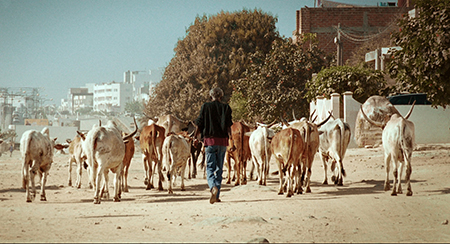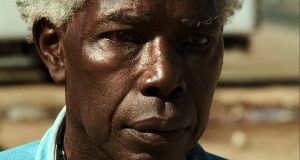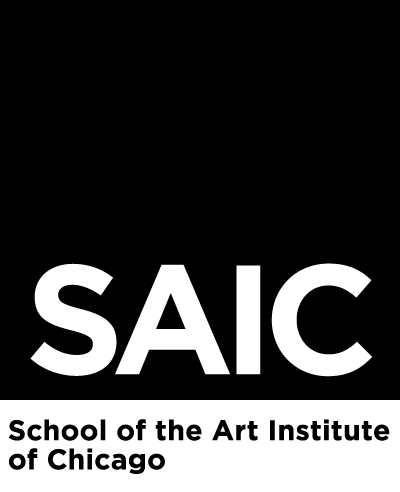On Mati Diop
Posted by | George William Price | Posted on | November 12, 2014
For the final installment of our SAIC student writing series, Natalia De Orellana examines the boundaries between documentary and fiction in Mati Diop’s A Thousand Suns. She suggests that Diop creates a world where imagination and reality intermingle.
Even as tougher immigration laws are proposed by European leaders–jeopardizing the long-gone fantasy of free movement–immigration has remained one of the principal worldwide issues shaping policy-making for the past half-century. Hidden among the facts and figures quoted by politicians are the complex stories and experiences of those who make this trek.
The issues around migration are just some of the themes embraced by the cinematographic narratives of Mati Diop (1982), daughter of the musician Wasis Diop and niece of Senegalese film director Djibril Diop Mambéty.
In 1972 Mambéty directed the film Touki Bouki which followed two youngsters in Dakar–Magaye Niang and Myriam Niang–who dreamed of leaving Senegal. The film has since become a classic of African cinema. Forty years later, Diop revisits this work and Magaye Niang with the film Mille Soleils (A Thousand Suns).
A Thousand Suns is a unique and compelling example of notions of presentness and inner conflict. Diop’s camera follows Niang, a denim-jacket-and-cowboy-boot-hero who had once the chance to ship away to Europe and yet whose feet remained anchored on the Senegalese coast: “At that moment,” Niang narrates, “I became very frightened, I wondered why I was leaving. What am I going to do in France?” Neither victim nor heroic figure, Niang is the present-day individual, the one that emblematizes the complex context where the West’s siren call is entangled with loss and fear. Indeed, Diop’s narratives are relevant for the attention she pays to conflict between passion and dreams and belonging and identity.
Diop’s films also transcend the definitional boundaries between documentary and fiction, creating a space between the imagination and the real, where “nothing is true and nothing is false.” The spectator finds herself in the in-between space of assurance and doubt, history and fantasy.
In intermingling the real and imaginary, Diop updates her uncle’s film and examines its legacy within the context of Senegal’s history. Questions from Touki Bouki are reformulated in A Thousand Suns: “Should I go?” becomes “Why didn’t I go?,” the “what will I do” is transformed into “what have I done?”
Natalia de Orellana is a second year graduate student in the dual degree program Arts Administration and Policy and Modern Art History, Theory and Criticism (2016). She holds an MA in Art History from The University of Edinburgh. Since 2010 she has collaborated in a number of curatorial projects in the United Kingdom for Tablo Arts, a non-profit London based organization. She is presently a curatorial fellow for the 2014–15 MFA Show at the School of the Art Institute of Chicago.
Tags: 2014 > Artist's Film > Mati Diop > Natalia De Orellana > Non-Fiction > Senegal > Touki-Bouki > USA


